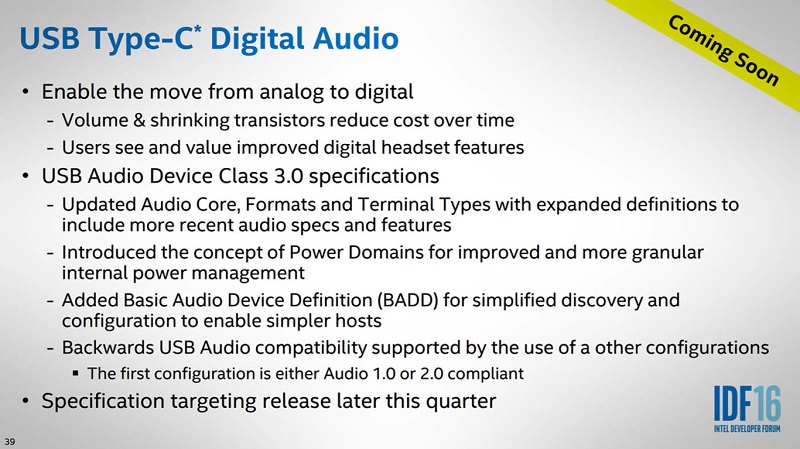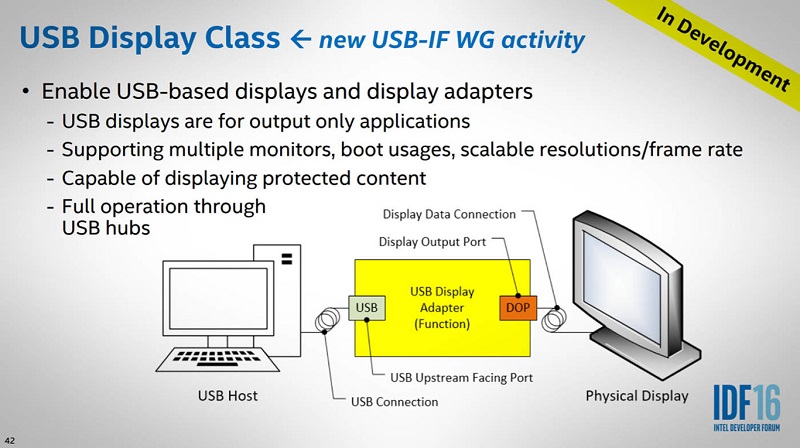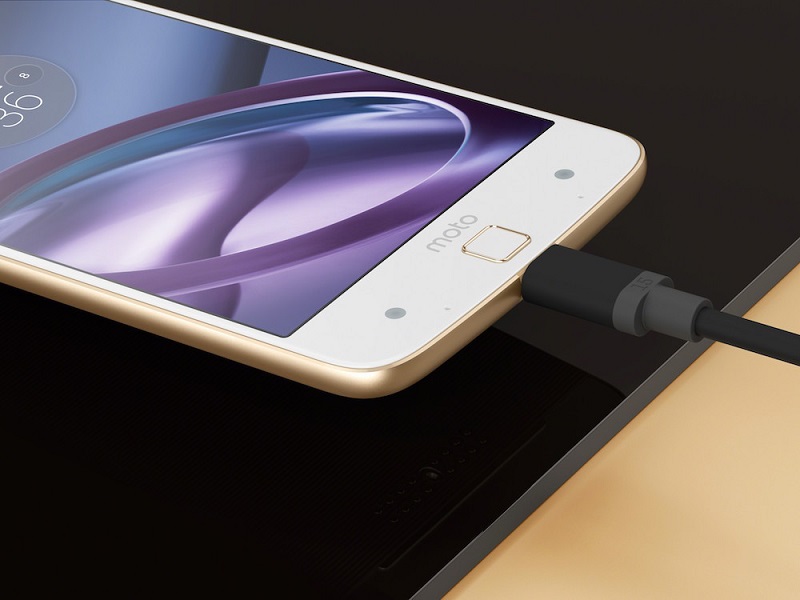It seems a fact that the famous 3.5 – millimeter jack for headphones is used disappears and this 2016 is the beginning of the end. Commercial proposals as the Moto Z, which is not the first to do so, as well as an approach in HTC 10, and rumors that tell us that the next iPhone will no headphone jack; today all adds Intel, who says that the future is in the USB-C adds.
During a session in its developer conference, Intel showed future capabilities that will be implemented in USB 3.0 and 3.1 interface, used in the USB type C, as a new type of video standard as well as the possibility of transmitting digital audio.

A new standard for audio and video via USB
Rahman Ismail and Brad Saunders, hardware engineers at Intel, explained that the USB-C is the future of connectivity devices, this its broad ability to transmit data and energy efficiently and with fewer components, so their adoption is imminent. Among its advantages it is that it can migrate to the digital audio, which in jack 3.5 mm was impossible because an external adapter is required to provide this quality.
You may also like to read another article on iMindSoft: Although moderate, follows the drop in computer sales according to Gartner and IDC
Offering quality earphones cable do not compare with a wireless, this is known by the manufacturers, so the next generation of devices and headphones will jump to a higher quality audio so you will not need to continue using the connector 3.5 mm. This addition to the advantages in removing components, which means a reduction in costs and which can lead to thinner devices.

In addition to the USB-C used as a port for audio will allow us to have hearing aids canceling integrated noise, because the interface is capable of providing the energy needed to power the cancellation circuit this while transmitting audio at the highest quality.
As for using the USB-C as a video interface, Intel is already preparing the standard ‘USB-IF WG’ which will not come to replace HDMI, but will be able to transmit images and videos in a simple way to monitor, televisions or other screens, which seeks to help the productivity of people more than having games at the higher rate and resolution.
This new standard will also include a new authentication method, with which we will know when a device is ready for these new features, in addition to be different specifications, this means that the USB of your smartphone might not be the same as a laptop or a TV. This new standard is expected to arrive later this 2016.
